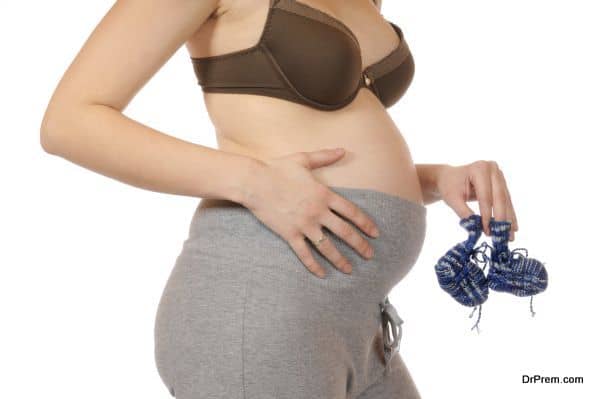To get pregnant, a woman should understand the basics of menstruation cycle, ovulation and conception. There are high chances of conception if the intercourse is timed during a woman’s fertile window. Fertile window falls five days before ovulation until the start day of ovulation. The fertile days are four to five days before and include the day of the ovulation. Out of these, the most fertile days fall just two days before and on the day of ovulation. Hence, it is quite important to know the day when a woman ovulates and time the intercourse during this golden period. Researches and studies indicate that timing in accordance to a woman’s fertile window is often a successful way to conceive.
Know the cycle
A woman should be able to precisely calculate her days of ovulation. There are various methods to calculate days of ovulation. One traditional way is to count the days to predict the day of ovulation. The primary basis for calculation of days depends on the length of the menstrual cycle. The period from the very first day of menstruation till the next occurrence of menstruation defines the length of a menstrual cycle. Cycles differ for each woman. On an average, the cycle of a woman can range from twenty eight to thirty days. To predict the date of ovulation, count fourteen days backwards from when the next menstruation cycle is supposed to begin.
Ovulation
Normally, a woman ovulates for one day per month during the menstruation cycle. Once the sperm enters the woman’s body it survives for about 5-6 days. This means that she can conceive any time after the 9th day of the menstrual cycle. When these 5 days are added to the actual day of ovulation, there are on an average, around six days in each month when there are high chances to conceive. Thus, it is important to time the intercourse in this fertile period.
During ovulation, an egg is released into the uterus and is ready for fertilization. The egg is available for 12 to 48 hours after which it starts to degenerate after reaching the uterus. This reduces the high levels of hormones that cause endometrium (uterine lining) to get discarded from the system. This results in menstrual bleeding. One can also notice or listen to the bodily symptoms to know the occurrence of ovulation, such as BBT (Basal Body Temperature), cervical mucus and lower abdominal pains.
The best day to get pregnant
To improve the chances of conception, researches and studies indicate to time the intercourse every day during the 4-5 day fertile window period. The day before the ovulation is actually the best time to conceive since sperms released before ovulation have time to reach the egg for fertilization. The success rate to conceive when the intercourse is timed during the fertile window is about 37 percent. Couples hoping for pregnancy should not limit the frequency of intercourse, unless there is a strong reason to do so. It is futile to anticipate for positive results for pregnancy when the intercourse has not taken place in the fertile window.
Tracking ovulation
For many women, the menstruation cycle may not be 28 days. This means that ovulation may not happen on the 14th day. For example, if a woman has a cycle of 31 days, then ovulation may happen on the 17th day, in this case. If the cycles are irregular or if the woman is experiencing lot of missed periods, calculation of ovulation days becomes a bit difficult. The days of ovulation is counted backwards and not forwards. If calculation and determination of ovulation date seems confusing, then the other best alternative is to track the changes in the cervical mucus. There is an increase in the production of cervical mucus a day or two before a woman ovulates and the consistency of the secretion changes as well. Yet another way to track ovulation is to chart the body’s basal temperature.
OPT (Ovulation Prediction Kits) are available which help to determine the right time to conceive. These kit use urine samples to check the increase of hormones, the LH (Luteinizing Hormone) surge that normally takes place in a woman before ovulation. However, couples making use of such kits should be aware that these show a positive or a peak only on the day prior to ovulation. Hence, it is important for such couples that intercourse should take place before observing a positive or a peak. It will help not to miss an opportunity to get pregnant.



